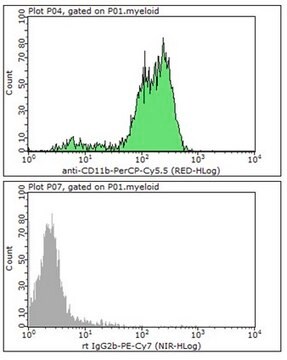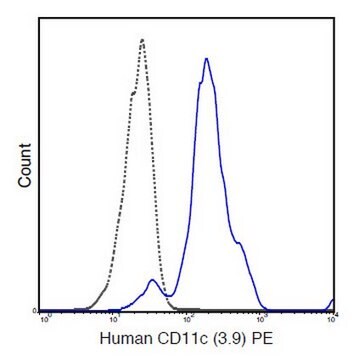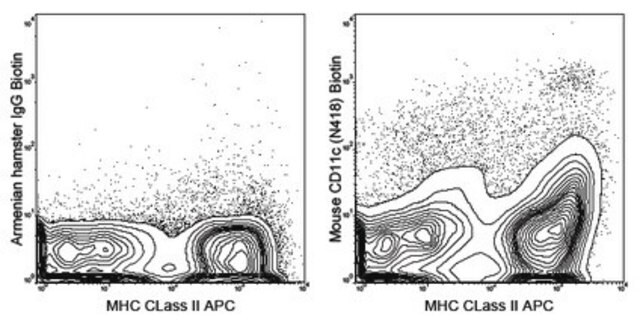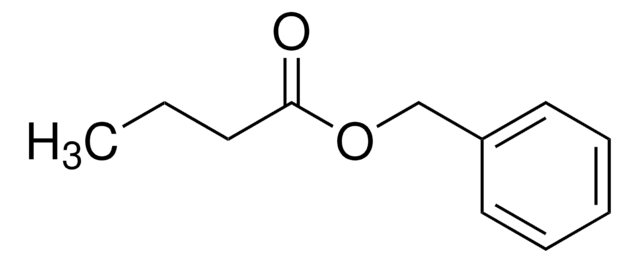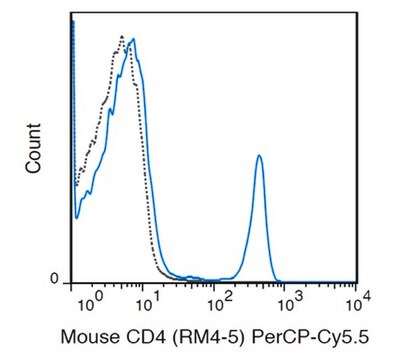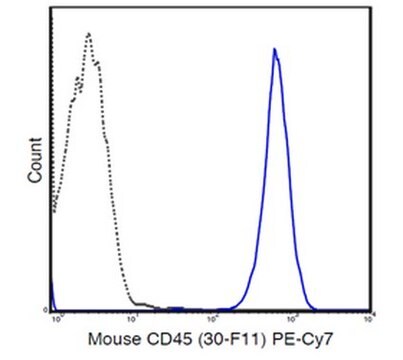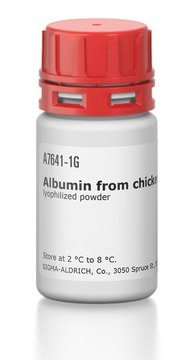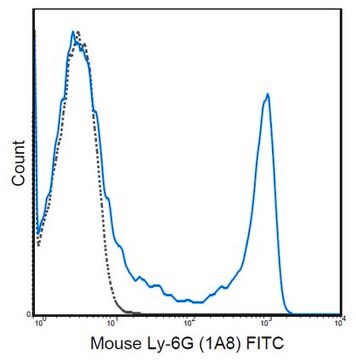MABF525
Anti-CD11c Antibody (mouse), violetFluor® 450, clone N418
clone N418, 0.2 mg/mL, violetFluor®
Sinónimos:
Integrin alpha-X, CD11 antigen-like family member C, Leukocyte adhesion glycoprotein p150,95 alpha chain, Leukocyte adhesion receptor p150,95, CD11c
About This Item
Productos recomendados
origen biológico
hamster (Armenian)
Nivel de calidad
conjugado
violetFluor® 450
forma del anticuerpo
purified antibody
tipo de anticuerpo
primary antibodies
clon
N418, monoclonal
reactividad de especies
mouse
fabricante / nombre comercial
violetFluor®
concentración
0.2 mg/mL
técnicas
flow cytometry: suitable
immunofluorescence: suitable
immunohistochemistry: suitable
immunoprecipitation (IP): suitable
isotipo
IgG
Nº de acceso UniProt
Condiciones de envío
wet ice
modificación del objetivo postraduccional
unmodified
Información sobre el gen
mouse ... Itgax(16411)
Categorías relacionadas
Descripción general
Inmunógeno
Aplicación
Inflammation & Immunology
Calidad
Flow Cytometry Analysis: 0.125 µg of this antibody detected CD11c in one million C57Bl/6 splenocytes.
Forma física
Almacenamiento y estabilidad
Información legal
Cláusula de descargo de responsabilidad
¿No encuentra el producto adecuado?
Pruebe nuestro Herramienta de selección de productos.
Código de clase de almacenamiento
12 - Non Combustible Liquids
Clase de riesgo para el agua (WGK)
nwg
Punto de inflamabilidad (°F)
Not applicable
Punto de inflamabilidad (°C)
Not applicable
Certificados de análisis (COA)
Busque Certificados de análisis (COA) introduciendo el número de lote del producto. Los números de lote se encuentran en la etiqueta del producto después de las palabras «Lot» o «Batch»
¿Ya tiene este producto?
Encuentre la documentación para los productos que ha comprado recientemente en la Biblioteca de documentos.
Nuestro equipo de científicos tiene experiencia en todas las áreas de investigación: Ciencias de la vida, Ciencia de los materiales, Síntesis química, Cromatografía, Analítica y muchas otras.
Póngase en contacto con el Servicio técnico